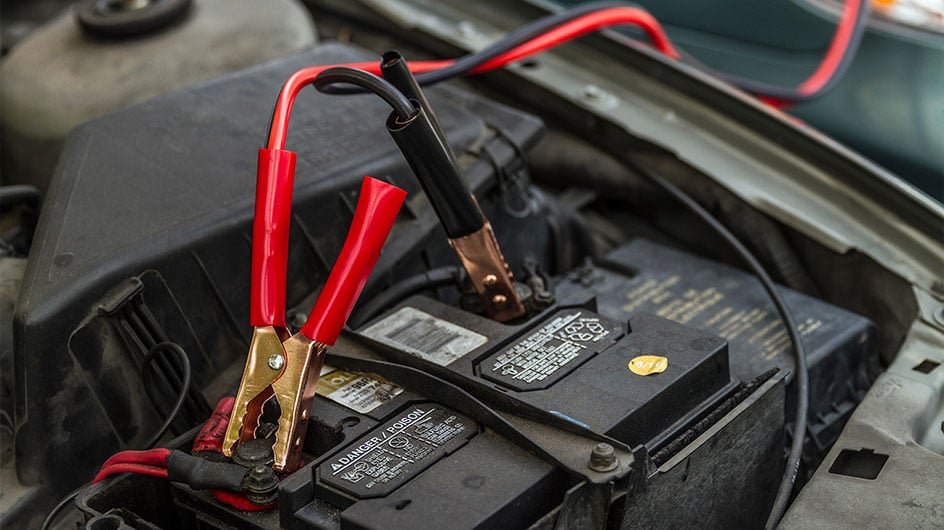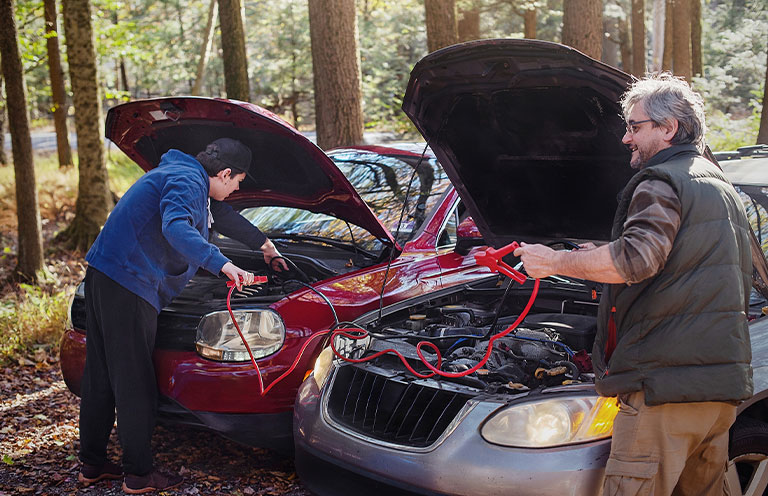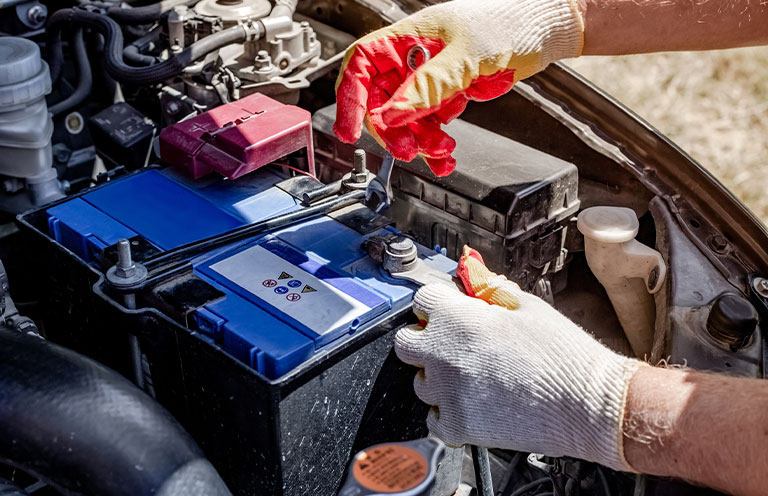A Beginner’s Guide to Understanding Your Car Battery
Learn how long the average car battery lasts and tips for extending its life—plus how to jump-start a dead battery


Your car battery is essential to your vehicle’s operation. The lead-acid battery under your hood starts the engine when you turn the key or press the starter button and helps power crucial tools such as headlights, windshield wipers, and air conditioning.
If you’ve ever wondered how long a car battery lasts, you’ve come to the right place. Here,
we look at all things battery-related, including common signs of wear, the average lifespan of a car battery and how to extend your battery’s life.

How long a car battery lasts
Car batteries usually last anywhere from three to five years, depending on how often you drive, the climate, and where you park. Most modern vehicles use a Sealed Lead-Acid battery (SLA), which consists of lead plates suspended in an electrolyte liquid that stores and dispenses electrical charge to your vehicle.
If you want to replace a battery, look for key specifications, including its Cold Cranking Amps (CCA), which tells you how well the battery can start an engine in cold weather, and battery Reserve Capacity (RC), which measures how long a battery can run before recharging it. Also consider voltage and size. Batteries come in many varieties and sizes, so consult your owner’s manual to ensure that you choose a car battery with the correct voltage that fits its designated compartment.

How to jump a dead battery
Car won’t start? Your first line of defense is a jump start from another car’s battery. Always carry a roadside emergency kit with jumper cables, and make sure you know how to use them. The connection order matters; you don’t want an electric shock or to trigger a dangerous battery-damaging surge. Here’s an overview:
- Park the vehicles so that you can easily access both batteries with the cables.
- Identify the positive (red/+) and negative (black/-) terminals of both batteries.
- Connect the cable’s positive clamp to the dead battery’s positive (+) terminal.
- Connect the second positive clamp to the donor battery’s positive (+) terminal.
- Connect the cable’s negative clamp to the live battery’s negative (-) terminal.
- Connect the second negative clamp to a piece of bare metal on the dead vehicle. This grounds the terminal.
- Start the donor vehicle, and run it for a minute or two.
- Start the dead vehicle, run it briefly, and then disconnect the cables in reverse order.

How to identify battery wear
Most car batteries show signs of wear before they kick the bucket. The trick is to identify an ailing battery before you’re stranded with a vehicle that won’t start. In addition to regular mechanic checkups, pop the hood every now and then at the gas pump and visually inspect the battery. Look for corrosion around the terminals or swelling on the sides—both are troubling signs. Dirty battery terminals charge and discharge inefficiently. To determine if you need to replace your battery, consider the following:
- Has it been three to five years since the battery was replaced?
- Are the lights dim, and are electrical components like radio and power windows not working correctly?
- Is the engine slow or difficult to crank?
- Are there warning lights on the dashboard? (Even a “check engine” light may indicate battery problems.)

How to extend your battery’s life
Even though all batteries eventually need replacement, you can do a lot to help it live its best, most useful life.
Park indoors or in the shade.
Exposure to extreme temperatures can take a toll on your battery’s life.
Avoid short trips.
Your battery expends most of its energy starting your vehicle, and your alternator recharges it as the engine runs. Short trips may not give your alternator enough time to recharge the battery, draining its capacity over time.
Keep terminals clean.
Clean battery terminals are a sign of a functioning battery. They also help your battery charge and dispense electricity. Check your battery terminals regularly and clean off signs of corrosion or dirt.
Start your car regularly.
Don’t let your vehicle sit unused for extended periods. Starting and running it for at least 10 minutes will keep your battery charged and help you avoid other dormancy issues like flat-spotted tires.
Have your mechanic check your battery.
Identify potential issues before they arise so that you can plan a new battery purchase before your current one dies.
. . . . .
Modern car batteries are efficiency powerhouses and won’t demand much of your attention. But if you take the time to understand how car batteries work, how to identify signs of battery wear, and what to do to extend their life, you’ll get more from your battery—and your money.
